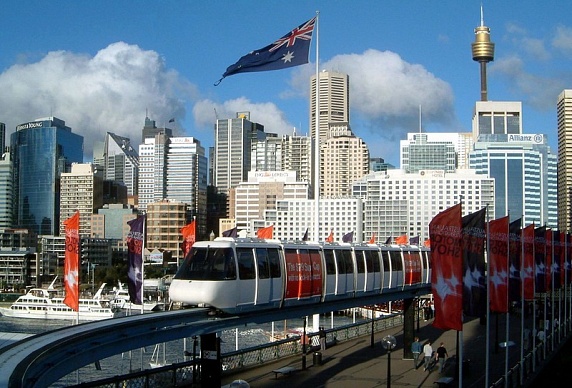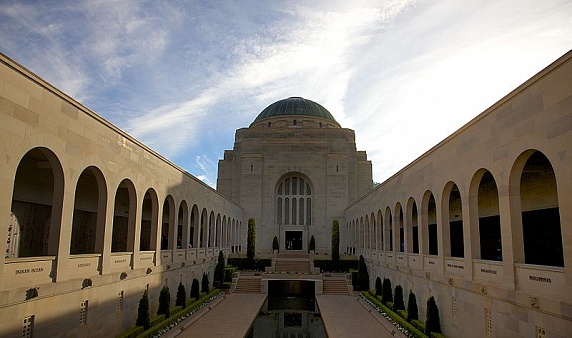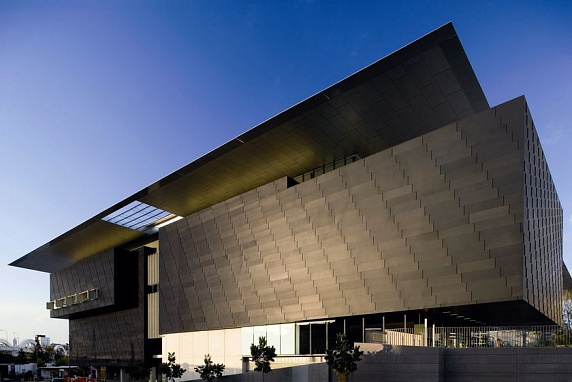 Австралия
Австралия
Russian Ambassador's interview to 10 News First
I: Thank you for catching up with us. You’ve been Ambassador to Australia for two months now. How would you describe Russia’s relationship with Australia?
A.P.: It’s been a short time for me in Australia but long enough to appreciate the huge potential for meaningful bilateral relationship we have. First of all, I would like to mention kind and warm attitude of the Australians I felt from my first day here and very soon I discovered that Australians had a passion for Russian culture: I was there in Brisbane when the theatre was giving a standing ovation to the Bolshoy artists, and just now I am back from Adelaide where the David Roche Foundation arranged a beautiful exhibition of the pieces of art related to Romanovs family and Faberge.
I also had several meetings with the business community here and with some State Governments. It revealed strong interest in Australia in doing business with Russia. I am very glad to see that last year our bilateral trade rose by 28 per cent, despite the bilateral sanctions, which prove counter-productive, as well as absolutely illegitimate US secondary sanctions. So, I think we have good prospects in economic relations.
As to the field of international politics, of course Russia and Australia have their differences. Yet, as two responsible members of international community and two countries of the Asia-Pacific we have every reason to maintain political dialogue, to consult each other and interact in international fora. A case in point is the latest G20 Summit in Osaka where Russia supported the Australian initiative on preventing Internet to be exploited by terrorists.
I: How do you think the Australian media has portrayed Russia during recent times?
A.P.: I would say that the Australian media follows the mainstream of the world media. And the mainstream nowadays is unfortunately to discredit Russia. That’s how it is.
And I’m judging by my own experience I already had here. Just recently, a well-known Australian newspaper published an editorial on MH-17 that carried many accusations against Russia. Besides the general very hostile tonality, it had some assertions that were simply not true to the facts. Then the Embassy wrote a letter to the newspaper asking to publish our comments as an opinion item. One of my new Australian friends told me that I had absolutely no chance to see our comments published. I disagreed and said that the standards of democratic journalism all but guaranteed the alternative point of view would be duly represented. We made a bet and I lost. Finally, the Embassy published its point of view through the social accounts.
I: Do you feel this being bias reporting in the media?
A.P.: In terms of MH-17, yes. I think that the Australian media do not reflect the reality in terms of Russia being very eager to find the truth right from the beginning. Especially because of many fingers being pointed at my country.
In fact, our contribution to the investigation was very significant. We provided satellite imagery and raw radar data. By the way, Ukraine failed to provide such data, alleging all of its relevant radars were out of order on the day of the crash. This somehow didn’t raise any eyebrows in the Dutch Safety Board. Instead, they concentrated on discrediting Russian radar data saying they were unclear. When we’ve tried to find out who the experts that made this conclusion were and what their professional level was, but we’ve never received an answer.
In terms of our contribution, I would also like to mention a Russian company, the designers and producers of the BUK missiles. The name is Almaz Antey. They arranged a very complex life-size experiment involving the controlled detonation of a BUK missile over a cockpit of an old out of use plane. The results were very significant in terms of making more precise calculations of the trajectory of the missile and therefore of the place from where it was fired. Unfortunately, these results were discarded again by the investigation.
Speaking of the criminal part of the investigation conducted by the Dutch prosecution, it also has been very selective right from the beginning. Russia was flatly denied participation in the JIT. Malaysia, the country of the airlines involved and the country that had more than 40 citizens on board of the plane, was also not allowed to enter the Team. They only were allowed three and a half months later. By that time, the initial members, Australia, Belgium, Netherlands and Ukraine, had already in place a non-disclosure agreement that gave Ukraine effective veto power over all public releases of the Team.
I: How big are your concerns about Russia’s exclusion from the JIT?
A.P.: Our concerns are that this exclusion negatively affects the conclusions. It means that our information, our data, our point of view are not duly represented, they are being discarded. We think it’s not by chance.
I: You mention AFP’s Commander Hurst’s request for the serial numbers of the BUK missile that took down MH-17, how seriously was her request taken in Moscow?
A.P.: I must say, May 24th 2018 was a very important date. The JIT, probably for the first time, presented not just computer animation, not only video clips copypasted from Bellingcat reports, or telephone calls intercepts provided by the Ukrainian Security Service that could not be obviously checked independently. The JIT and namely its Australian member Commander Hurst displayed real feasible piece of evidence, wreckage of the missile that bore serial numbers. We felt that this could lead to important conclusions. So, when the JIT called for any information that could be found about this wreckage, what we did, we checked the serial numbers against the Soviet time archives. We soon found the missile in question was delivered on December 29, 1986 to a Soviet Army air-defence unit 20152 stationed in Ternopol region of the then Ukrainian Soviet Socialist Republic and never returned to Russia. The respective declassified documents were made public by our Defence Ministry at the press conference September last year. Obviously, these materials were also made available to the JIT.
I: What does it tell us that it hadn’t even come back to Russia. What conclusion do you draw from that?
A.P.: I am not an investigator. I am not here to draw conclusions. It’s not my task. Russia has been excluded from the investigation. But it seems that our task is to point out the discrepancies and at least to expect that the information that looks crucial to anyone even if they are not experts will be taken into account. That is why I was watching intensely the press-conference on 19 June. It was the first public appearance of the JIT after it displayed the missile’s parts, it requested information publicly and received this information. One could expect that at the next public appearance they would say something about it. However, through the whole press conference not a single word has been said about it. Then during the Q&A after a journalist asked a direct question about the Ukrainian provenance of the missile, the answer was that the information supplied by Russia “didn’t give the right picture”. I can fully appreciate that the missile being a Ukrainian one could not possibly be “the right picture” for JIT that Ukraine is a part of. But then, please, stop pretending it’s an impartial and professional investigation.
I: You touched on this before but what disappoints you most about the JIT’s reaction to Russia’s findings?
A.P.: That is exactly what I was talking about. I was shocked by this kind of discarding the obvious facts. It seems that the investigation right from the beginning has been guided by two simple rules. Rule 1. Russia is to blame. Rule 2. When in doubt, see rule 1. And that’s all.
I: Do you feel there has been strong bias in the JIT investigation?
A.P.: Yes, I do feel so.
I: Australian families, all families of the victims are still hurting, do you feel they have been treated fairly and told the truth about what has happened?
A.P.: We feel sympathetic to the bereaved families. They do deserve truth. So far, they’ve been offered an ingeniously crafted surrogate instead of the truth. I don’t think it’s right.
I’d also like to point out one thing. So far, there is no truth as to who fired the missile. But there is one aspect of truth which has been established beyond any doubt. It is about asking one simple question: why the commercial flights were allowed to fly over a zone of heavy military operations and whose responsibility it was to prevent this situation? Let me refer to The Dutch Safety Board report saying that “Ukraine had sufficient reason to close the entire airspace over the eastern part of Ukraine”. I think it’s high time we held Ukraine accountable for not doing so and for allowing in summer 2014 every day up to 200 commercial flights to fly over the eastern Ukraine zone (on the day of the crash there were 160, if I am not mistaken) until one of them was shot.
I: What would Russia like to see from the investigation going forward?
A.P.: I am not naïve. I cannot expect the investigation to change their ways – they have gone too far already. But I do hope and do expect the world public and the Australian public for that matter to be less indiscriminate and uncritical about so called “findings” of the JIT. I expect people to think for themselves, look for facts and use common sense. If we are to see the truth revealed one day, all of us should do just this.












